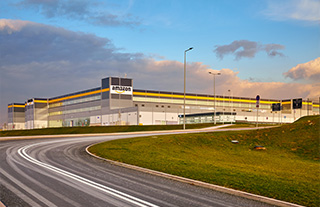
This past June, the equipment and inventory formerly owned by bankrupt Quantum Foods in three Bolingbrook, Ill., buildings fetched in excess of $13 million in a turnkey, going-concern sale to West Liberty Foods, LLC. The transaction, coordinated by Tiger Group, City Capital Advisors, LLC and Schneider Industries, was just the latest to illustrate how the creative approaches of today’s disposition firms—often working in strategic partnerships — can lead to better returns for the lender. By avoiding a piecemeal auction, the deal prevented two food processing plants and a cold storage distribution center from being dismantled, creating 400 to 600 jobs at facilities that were in the process of going dark.
Turnkey sales, in particular, are complex and often require a team of experts who are capable of handling specific aspects of the business such as inventory, equipment, real estate, IP and other asset classes as efficiently as possible. The growing trend toward such partnerships illustrates how today’s disposition and lending firms, in addition to being characteristically aggressive about the pursuit of deals, are learning to be more resourceful and creative as well.
Simply put, the focus is on adaptation. In the lending arena, that means constantly seeking to better understand the value of non-traditional assets such as IP, brand value and the “relative value” of various businesses. Lenders don’t want fluff on these admittedly “softer-science” assets. Just as in other areas of the business, today’s lenders are keen on cutting through the hype and asking hard questions as they explore their creative sides; they want to feel assured that the brand is strong enough to attract interested parties and drive premium bids in excess of pure NOLV. They insist on having confidence in their plans for accessing the liquid value of asset types, which they have never loaned against before. They are focused on essentials such as making sure they have the right partners or that the company’s cash flows will last through the length of the process.
With regard to aggressiveness, asset-disposition firms are working harder than ever to provide competitive advantages and enhanced recoveries by leveraging solutions and approaches that reflect the realities of today’s marketplace. More often than not, this involves expanding their operating platforms. Specifically, by aligning with a greater variety of strategic, going-concern partners — from real estate and M&E/industrial partners, to brands and IP partners — firms are able to offer more nimble and holistic approaches, and better overall values. These strategic relationships are important because they can help tap into hidden value on emerging opportunities.
Why all the focus on creativity and aggressiveness? According to Thomson Reuters LPC data for 2013, syndicated ABL loan volume of close to $60 billion was flat year over year, and down 40% from its peak 2011 levels. New relationships sparked only 21% of this loan activity, with much of the current volume coming from refinancing. Pricing in 2013 declined 10% from L+227 to L+204. This was down dramatically from the high point of L+430 seen at the depth of the recession in ’08-’09, and quickly approaching the L+150/175 range not seen since the apex of ’06-’07. Likewise, the stats for bankruptcy filings and M&A have been, in the main, unimpressive. In this largely flat and highly competitive market, being aggressive and/or creative has become the price of admission. As such, to win new deals, both lenders and asset disposition firms need to find new creative ways to provide more liquidity and options to prospective new clients.
In recent retail liquidations, including those of Loehmann’s and Coldwater Creek, the adaptability of the firms involved clearly was a constructive factor in maximizing the process. In its liquidation of off-priced women’s fashion retailer Loehmann’s, for example, the joint venture of Tiger Group, SB Capital and A&G Realty Partners put forth an aggressive, all-asset purchase proposal as a stalking horse, which led to highly competitive biding at the auction on the inventory, fixtures, IP and customer list, as well as the leased real estate. The inventory values alone far exceeded expectations as the joint venture took steps such as purchasing on-order merchandise from the vendor to drive a higher return. The all-asset joint venture bid, with its strategic alignment with A&G Reality partners, also drove up the value on other assets, namely the IP/brand and the leased real estate. As a result, the recovery to the estate was far in excess of what the lender was owed, as both Madison Capital and Esopus Creek actively participated in the bidding on the real estate and IP and customer list.
In yet another example was exhibited in the auction of Coldwater Creek, which filed for Chapter 11 bankruptcy protection in April. The auction on all of the assets, including inventory, fixtures, on-order goods, IP and customer lists, started at $119 million and ended at $161 million, which raised more money than expected and reportedly enabled the retailer to pay its highest-priority debts in full. The key to the auction was, again, this joint participation with strategic partners, particularly on the IP and customer lists, which combined with an aggressive bidding strategy on the inventory, resulted in overall recoveries far in excess of values previously anticipated.
And in another sign of the no-stone-unturned attitude of today’s bidders, the buyer of Brookstone Holdings Corp. was none other than a Chinese investment firm and conglomerate (Sailing Capital/Sanpower). Hardly one of the “usual players,” the buyer reportedly paid $173 million to beat out an affiliate of Spencer Spirit Holdings Inc. This result was considerably higher than initially expected.
On the wholesale and industrial side, meanwhile, lenders and disposition firms are seeing considerable growth in turnkey and strategic operation sales as more buyers — emboldened by their own success and the more sanguine outlook for the economy — seek to move into new markets or increase their capacity. Prior to the aforementioned Quantum sale, for instance, KPS Capital Partners moved to acquire the entirety of the assets of Furniture Brands International (including such brands as Thomasville, Broyhill, Lane and Drexel Heritage) as a going-concern in the course of a Section 363 sale. More recently, Tiger Group’s Remarketing Services Division directed auctions where turnkey buyers stepped up to purchase such diverse assets as a waste-to-energy plant and the IP, production facilities and other assets of a well-known nutraceutical and skin care manufacturer, Creation’s Gardens.
Against the backdrop of a stagnant market, our industry continues to see significant growth in demand for wholesale dispositions, remarketing services and private sale expertise, with a greater number of companies seeking to aggressively manage underutilized or unproductive assets. In this changed landscape, banks and disposition firms are right to focus on adaptation. They understand that to win business, you have to be creative, properly aligned strategically and aggressive with respect to both price and structure.



